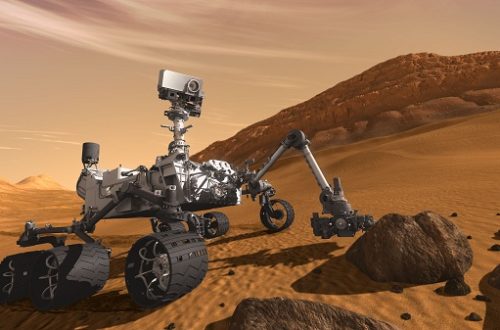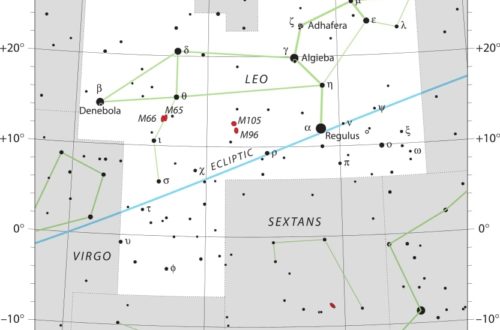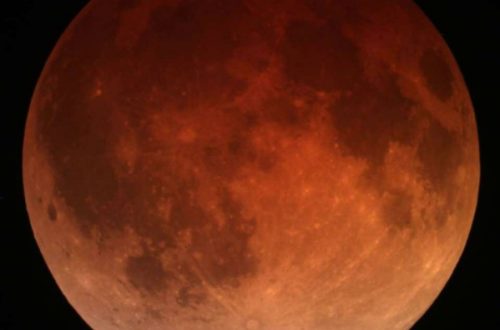Stargazing Calendar for June 2023
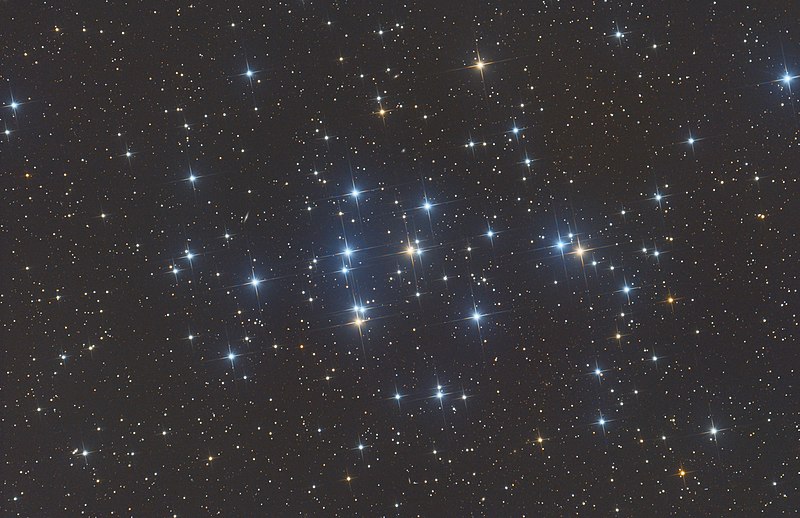
Looking for the June 2025 stargazing calendar?
Hello fellow stargazers! June offers a range of astronomical events, including Mars and M44’s close approach, many conjunctions, and asteroid Parthenope at opposition. Meteor showers like the Daytime Arietids and June Bootids also grace the sky. Don’t miss them!
Would you like to be notified of stargazing events?
First of all, on June 2, we will be able to witness a close approach of Mars and M44, also known as the Beehive Cluster. The two celestial objects will pass within 10.4 arcminutes of each other in the constellation of Cancer. This will be close enough so that they would both fit within the field of view of a telescope. They will also be visible to the naked eye because Mars will be at apparent magnitude 1.6 and M44 at 3.1. M44 is commonly known as the Beehive Cluster, but also Praesepe (Latin for “manger” or “crib”) since ancient times. It is an open cluster, one of the nearest ones to Earth, which contains just over a thousand stars.
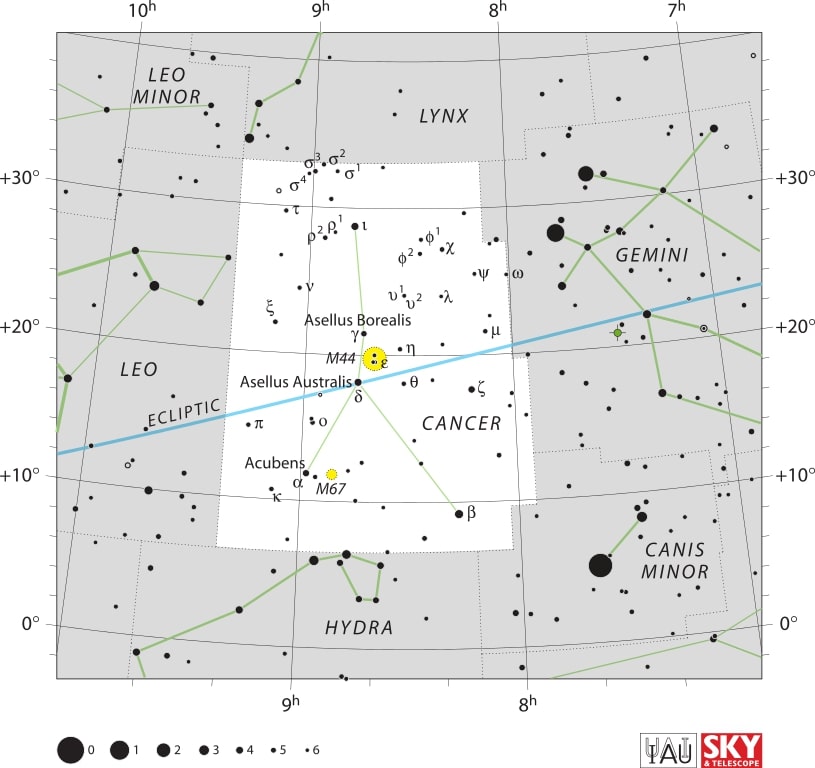
On June 4, there will be a conjunction of Mercury and Uranus, with the two planets sharing the same right ascension and passing 2°54′ from each other. Mercury will be at apparent magnitude 0.0 and Uranus at 5.9. Look with binoculars in the constellation of Aries.

On the same day, Venus will be at greatest eastern elongation, meaning it will reach its greatest separation from the Sun. Venus is the brightest object in the night sky after the Moon, so you may definitely observe this event with the naked eye. The planet will shine at apparent magnitude of -4.3. Look in the constellation of Cancer.
Then on June 6, the asteroid 11 Parthenope will be at opposition. The asteroid will reach its highest point in the sky around midnight local time, in the constellation of Ophiuchus. At the same time, Parthenope will reach its closest point to Earth (perigee) at 1.324 AU, reaching a peak brightness of apparent magnitude 9.5. Unfortunately that will still be too faint to see with the naked eye, so you would need a telescope. Parthenope is a large, bright main-belt asteroid, discovered by Annibale de Gasparis in 1850. It was named for Parthenopē, one of the Sirens of Greek mythology who according to legend has founded the city of Naples.
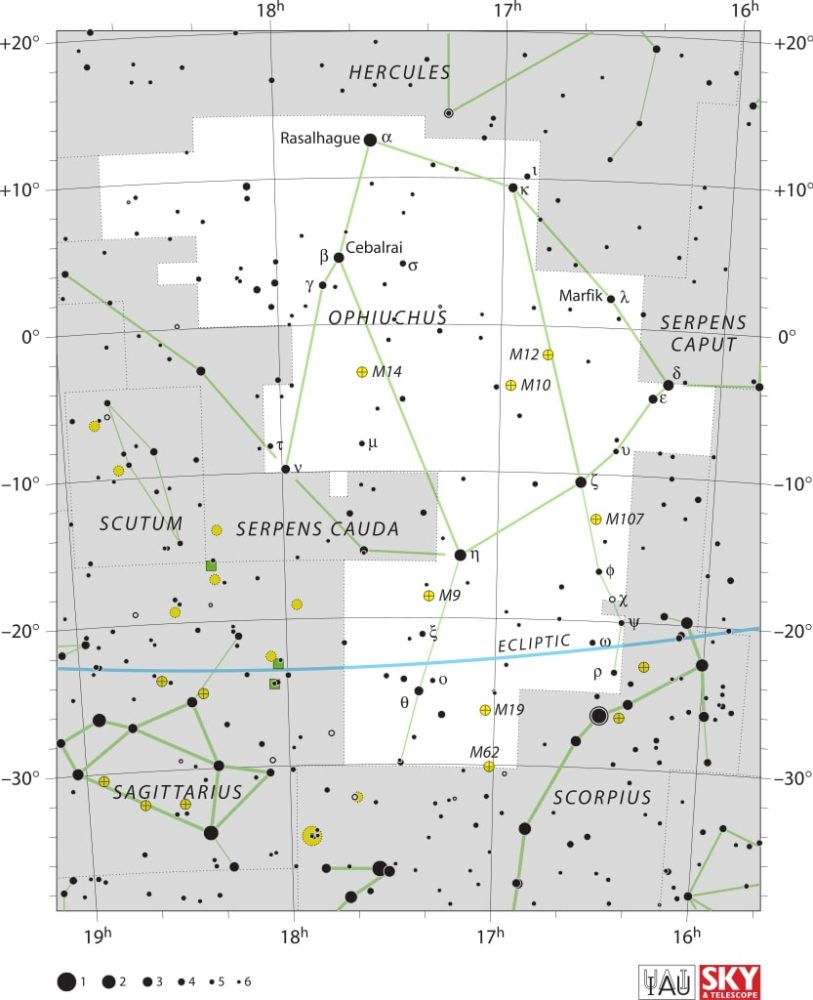
On June 7, the Daytime Arietid meteor shower will peak. Even though there will be as many as 50 meteors on average per hour during the peak, very little of it (if anything at all) would be visible. This is because, as the name indicates, it’s a meteor shower that happens during daytime. What makes things even worse, is that the point from which the meteors will appear to radiate is in the constellation of Aries, which happens to be very close to the Sun at the time. I don’t have much hope for this one, but I’m mentioning it anyway because some of you might get lucky if you try to observe just before dawn on June 8. Some meteors might also be visible between May 14 and Jun 24.
Also on Jun 7, Mercury will be at highest altitude in the morning sky. This makes it a good time to observe the planet. It will be visible to the naked eye with an apparent magnitude of 0.4. Look in the constellation of Taurus.
Later on Jun 9, there will be a conjunction of the Moon and Saturn, meaning the two bodies will share the same right ascension, passing 2°58′ of each other. At nearly the same time, the two bodies will also make an appulse, meaning they’ll get closest to each other (no longer sharing the same right ascension) at 2°42′ of each other. The two bodies will be too far away from each other to fit within the field of view of a telescope, but at least the two bodies will be visible to the naked eye. The Moon will be at apparent magnitude -12.2, and Saturn at 0.7, both in the constellation of Aquarius.

On June 13, we will be able to observe a close approach of Venus and M44. Sounds familiar? Well, yes! At the beginning of the month it was Mars that traveled through the Beehive Cluster, which is what M44 is commonly known as. If you missed it, then you have the chance to observe Venus making a similar path. The two bodies will come within a mere 47.9 arcminutes of each other, both in the constellation of Cancer. Venus will be at apparent magnitude -4.4 and M44 at 3.1.
Then on June 14, there will be a conjunction of the Moon and Jupiter, with the two planets sharing the same right ascension and passing within 1°30′ of each other, both in the constellation of Aries. At around the same time they will also make an appulse coming within 1°22′ of each other. The Moon will be at apparent magnitude -10.6, and Jupiter at -2.2.
On June 21, will be the June solstice. It will be longest day of the year in the northern hemisphere and the shortest in the southern. This is the day that the Sun’s annual trip around the zodiac takes it to its northernmost point in the sky, at a declination of 23.5°N in the constellation of Cancer. The June solstice is the first day of summer in the northern hemisphere and the first day of winter in the southern.
On the same day of June 21, you will be able to see a conjunction of the Moon and Venus. This means the two planets will be sharing the same right ascension and will be passing within 3°41′ of each other. At around the same time they will also make an appulse coming within 3°31′ of each other. This means the two bodies will be too far apart to fit within the field of view of a telescope, but they are the two brightest bodies in the sky, so you can most certainly observe them well with the naked eye. The Moon will be at apparent magnitude -10.3, and Venus at -4.4. Look in the constellation of Cancer.
The next day, you will be seeing another conjunction, this time the conjunction of the Moon and Mars. They will be sharing the same right ascension at 3°47′ of each other. At around the same time they will also make an appulse coming within 3°34′ of each other. The Moon will be at apparent magnitude -10.5, and Mars at 1.7. The show has moved over next door to the constellation of Leo, but still close to the constellation of Cancer. Venus will still be nearby, so you can observe all three bodies together.
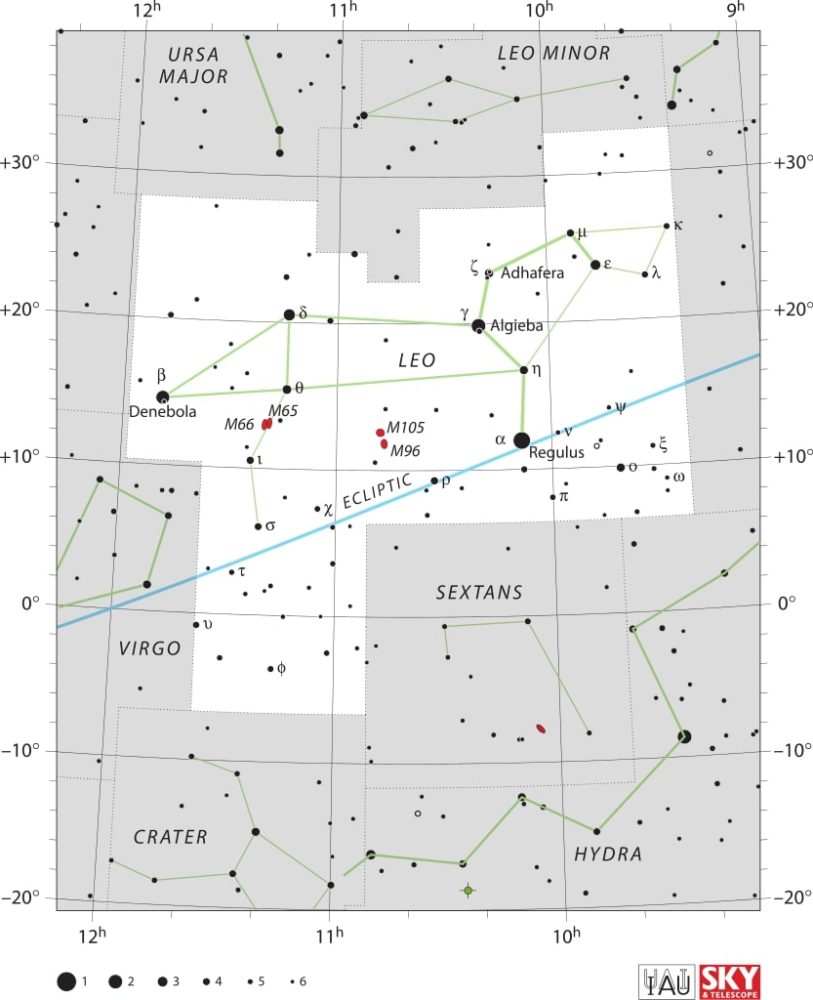
Finally, on June 27, the June Bootid meteor shower will peak. The average hourly rate of meteors for this shower’s peak is variable. On some rare occasions it crossed even 100 meteors per hour, however most of the time it’s a very week meteor shower with only one or two meteors per hour. This will be the case this year as well, so not much hope for this one. But who knows, maybe you’ll be the lucky one to spot a meteor from the June Bootids. Some meteors may also be spotted between June 22 and July 2. As the name indicates, they will appear to radiate from the constellation of Bootes. They originate from the comet 7P/Pons–Winnecke.
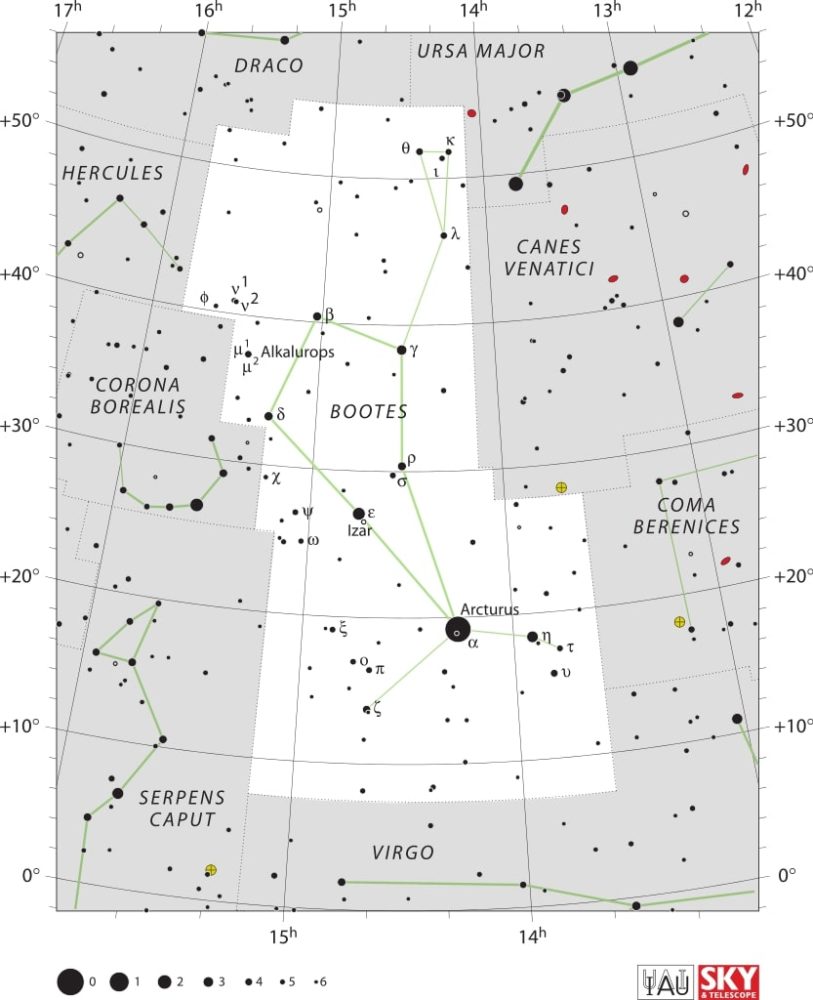
Moon phases
As you know, the Moon has a big impact on the visibility of celestial bodies in the night sky. So here are the Moon’s phases for this month:
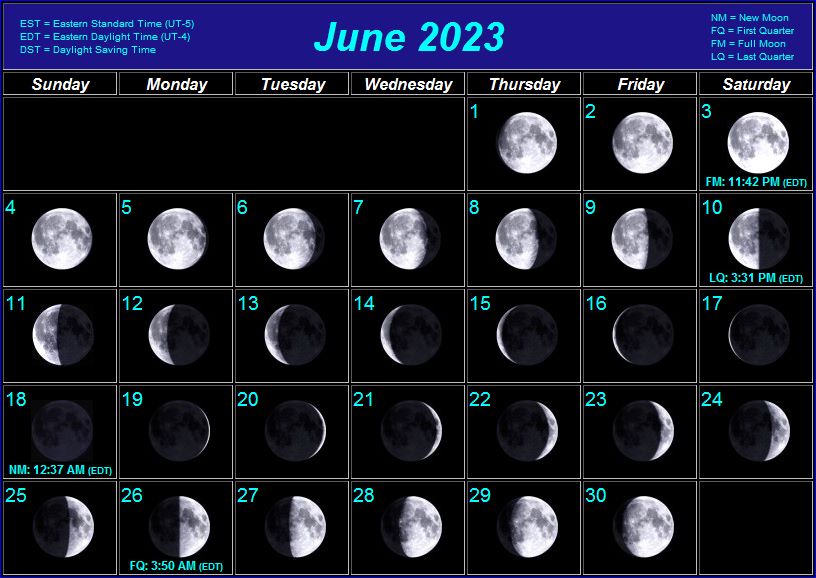
Positions of the planets this month
Mercury: The closest planet to the Sun can be seen at dawn and dusk travelling across the constellation of Aries and later Taurus. This planet, being the closest to the Sun, will appear to move quickly in the night sky and its position will change in the following weeks.
Venus: The sister planet can be seen near Mercury travelling across the constellation of Gemini then Cancer. Just like Mercury, Venus can only be seen at dawn and dusk.
Mars: The red planet can be seen in the constellation of Cancer.
Jupiter: The gas giant is visible in the constellation of Aries. Jupiter can easily be spotted with the naked eye, even in highly illuminated cities.
Saturn: The ringed giant can be seen with the naked eye in the constellation of Aquarius.
Uranus: The gas giant can be seen in the constellation of Aries with the use of a telescope.
Neptune: The blue giant requires a telescope pointed in the constellation of Pisces in order to be seen.
Positions of dwarf planets and large asteroids this month
Ceres: The asteroid belt’s lone dwarf planet can be seen in the constellation of Virgo with the help of a telescope.
Vesta: This large asteroid can be seen in the constellation of Aries with a telescope.
Pallas: The asteroid can be observed with a telescope in the constellation of Cancer.
Pluto: This distant dwarf planet can be found in the constellation of Capricornus with the help of a large telescope.
Major astronomical events next month
- July 1 – Comet C/2023 E1 (ATLAS) at perihelion.
- July 7 – Asteroid 15 Eunomia at opposition.
- July 9 – Venus at greatest brightness.
- July 10 – July Pegasid meteor shower peak.
- July 12 – Comet 185P/Petriew at perihelion.
- July 20 – Comet C/2021 T4 (Lemmon) at perigee.
- July 22 – Pluto at opposition.
- July 28 – Piscis Austrinid meteor shower peak.
- July 30 – Southern δ-Aquariid meteor shower peak.
- July 30 – α-Capricornid meteor shower peak.
- July 31 – Comet C/2021 T4 (Lemmon) at perihelion.
Conclusion
June presents an array of celestial wonders for astronomy enthusiasts. From the close approach of Mars and M44 to conjunctions, meteor showers, and significant astronomical alignments, there is something for everyone to marvel at in the night sky. Take advantage of these opportunities to observe and appreciate the beauty and grandeur of our universe. Happy stargazing!
Sources:
- Planetary ephemerides produced by NASA’s Jet Propulsion Laboratory (JPL)
- International Meteor Organization
See also:
- Previous month’s calendar: Stargazing Calendar for May 2023
- Next month’s calendar: Stargazing Calendar for July 2023
Would you like to receive similar articles by email?



